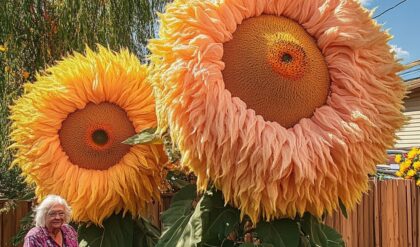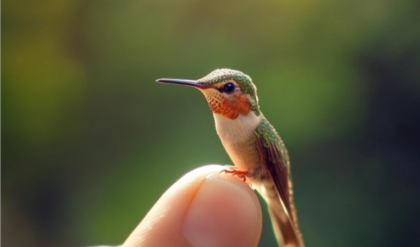Lenticular clouds have long captivated the imagination of people around the world. These peculiar, lens-shaped formations have a distinct, almost otherworldly appearance that often leads to speculation about their connection to unidentified flying objects (UFOs). From the mountains of Canada to the deserts of the American Southwest, lenticular clouds have been spotted and photographed, leaving a trail of wonder and intrigue in their wake.

Photos of Lenticular Clouds in 2022
In the year 2022, the EarthSky community was once again treated to a stunning array of lenticular cloud sightings from across the globe. One such example came from Sheryl R. Garrison, who captured a remarkable image of these clouds over the mountains of Southern Alberta, Canada, on November 12th.
A Space Invasion in the Rockies
Sheryl’s image perfectly encapsulates the sense of wonder and mystery that surrounds lenticular clouds. As she wrote, “It looked like a space invasion as we headed toward the mountains on the weekend. I couldn’t help but think of the headline … Breaking News: Rocky Mountains Invaded by Lenticular Clouds.” The lens-shaped formations, stacked one atop the other, seem to hover above the landscape, an otherworldly presence in the sky.

Lenticular clouds are formed when stable, moist air flows over mountainous terrain, creating a series of large-scale standing waves on the mountain’s downwind side. As the air crest of these waves cools to the dew point, moisture in the air condenses to form the distinctive lens-shaped clouds. As the air descends back into the trough of the wave, the clouds can quickly evaporate, lending an ephemeral quality to these atmospheric phenomena.
Lenticular Clouds in Taiwan and California
Sheryl’s image is not the only remarkable lenticular cloud sighting from 2022. Meiying Lee, a photographer in Taichung, Taiwan, captured a stunning image of a lenticular cloud forming over the Syue Mountain, the second-highest peak in the country. Meiying described the cloud as resembling “a hat” and “very much like a UFO,” echoing the common misconception that these clouds are of extraterrestrial origin.

On the other side of the Pacific, Tirza Grant in Rancho Mirage, California, also documented the appearance of lenticular clouds in her region. These elegant, saucer-shaped formations seem to hover effortlessly above the landscape, a captivating sight for anyone who happens to witness them.
Photos of Lenticular Clouds in 2021
The year 2021 also saw its fair share of lenticular cloud sightings, with EarthSky community members capturing these atmospheric wonders from a variety of locations.
Lenticular Clouds over Mount Rainier
One particularly striking image was taken by Terri Jonas, who photographed a series of lenticular clouds from a plane as she flew over Mount Rainier in Washington state. Terri, a self-professed lover of clouds and volcanoes, was mesmerized by the sight of these enigmatic formations hovering above the iconic mountain.

Lenticular clouds are often associated with mountainous regions, as the unique topography and airflow patterns in these areas provide the perfect conditions for their formation. Mount Rainier, with its towering peak and surrounding ridges, is a prime location for the appearance of these captivating cloud formations.
Lenticular Clouds in Tucson, Arizona
Not all lenticular cloud sightings, however, are limited to mountainous regions. Jill Phipps, a resident of Tucson, Arizona, captured a stunning image of these clouds in her local skies. As she observed, the stacked, saucer-like appearance of the clouds gave them a distinctly UFO-like quality, leaving her in awe of their unique and unexpected presence.

The formation of lenticular clouds in non-mountainous areas is often the result of shear winds created by weather fronts, rather than the uplift and wave patterns associated with mountainous terrain. This can lead to the appearance of these clouds in unexpected locations, further adding to the sense of mystery and wonder that surrounds them.
Photos from Before 2021
While the EarthSky community has continued to document the appearance of lenticular clouds in recent years, these atmospheric phenomena have been captivating the human imagination for much longer.

Lenticular Clouds near Mount Shasta, California
One notable example comes from Doug Blaney, who captured a striking image of lenticular clouds near the iconic Mount Shasta in California. Weed, the town where Blaney’s photograph was taken, is located just 10 miles west-northwest of the towering volcanic peak, making it a prime location for the formation of these cloud formations.
The Washington Post has even featured the lenticular clouds near Mount Shasta, highlighting the area’s reputation as a hotspot for these atmospheric wonders. The combination of the mountain’s imposing presence and the distinctive shape of the lenticular clouds creates a visually stunning and captivating sight.
Lenticular Clouds over Mount Rainier and Beyond
The striking appearance of lenticular clouds has also captivated photographers in other regions, such as David Roberts, who captured these formations over Mount Rainier in Washington state. Additionally, Richard Doyle and Richard Hasbrouck have documented lenticular clouds in British Columbia, Canada, and Truchas, New Mexico, respectively.

These images showcase the truly global reach of lenticular cloud sightings, with these enigmatic formations appearing in diverse geographic locations, from the towering peaks of the Cascades to the rolling hills of the American Southwest.
Deborah Byrd and the EarthSky Community
At the heart of the EarthSky project is Deborah Byrd, a science communicator and educator who has dedicated her life to sharing the wonders of the natural world with audiences around the globe. Byrd’s passion for science and her gift for storytelling have made EarthSky a beloved and trusted source of information for nature enthusiasts and curious minds alike.
Byrd’s Contributions to Science Communication
Byrd’s journey with EarthSky began in 1991 with the creation of the EarthSky radio series, and she later founded the EarthSky.org website in 1994. Throughout her career, Byrd has been a tireless advocate for science, using her platform to educate and inspire people about the marvels of the natural world.
Her efforts have not gone unnoticed, as Byrd has been recognized with a galaxy of awards from both the broadcasting and scientific communities. In 2020, she was honored with the prestigious Education Prize from the American Astronomical Society, the largest organization of professional astronomers in North America.
The EarthSky Community and Lenticular Cloud Sightings
The EarthSky community has played a vital role in documenting and sharing the ongoing fascination with lenticular clouds. Through the EarthSky Community Photos platform, members from around the world have contributed their stunning images and personal accounts of these atmospheric wonders.

As Byrd has noted, being an EarthSky editor is akin to “hosting a big global party for cool nature-lovers.” This sense of community and shared wonder is evident in the diverse array of lenticular cloud sightings that have been captured and shared through the EarthSky platform.
Conclusion
The captivating and mysterious nature of lenticular clouds continues to captivate the human imagination, as evidenced by the stunning images and personal accounts shared by the EarthSky community. From the mountains of Canada to the deserts of the American Southwest, these ethereal formations have been sighted and documented, sparking a sense of wonder and curiosity in all who witness them.
Through the tireless efforts of Deborah Byrd and the EarthSky team, these lenticular cloud sightings have been preserved and shared with a global audience, inspiring a deeper appreciation for the beauty and complexity of our natural world. As we continue to explore and unravel the secrets of these enigmatic atmospheric phenomena, the EarthSky community remains a vital hub for the celebration of the wonders that surround us.




